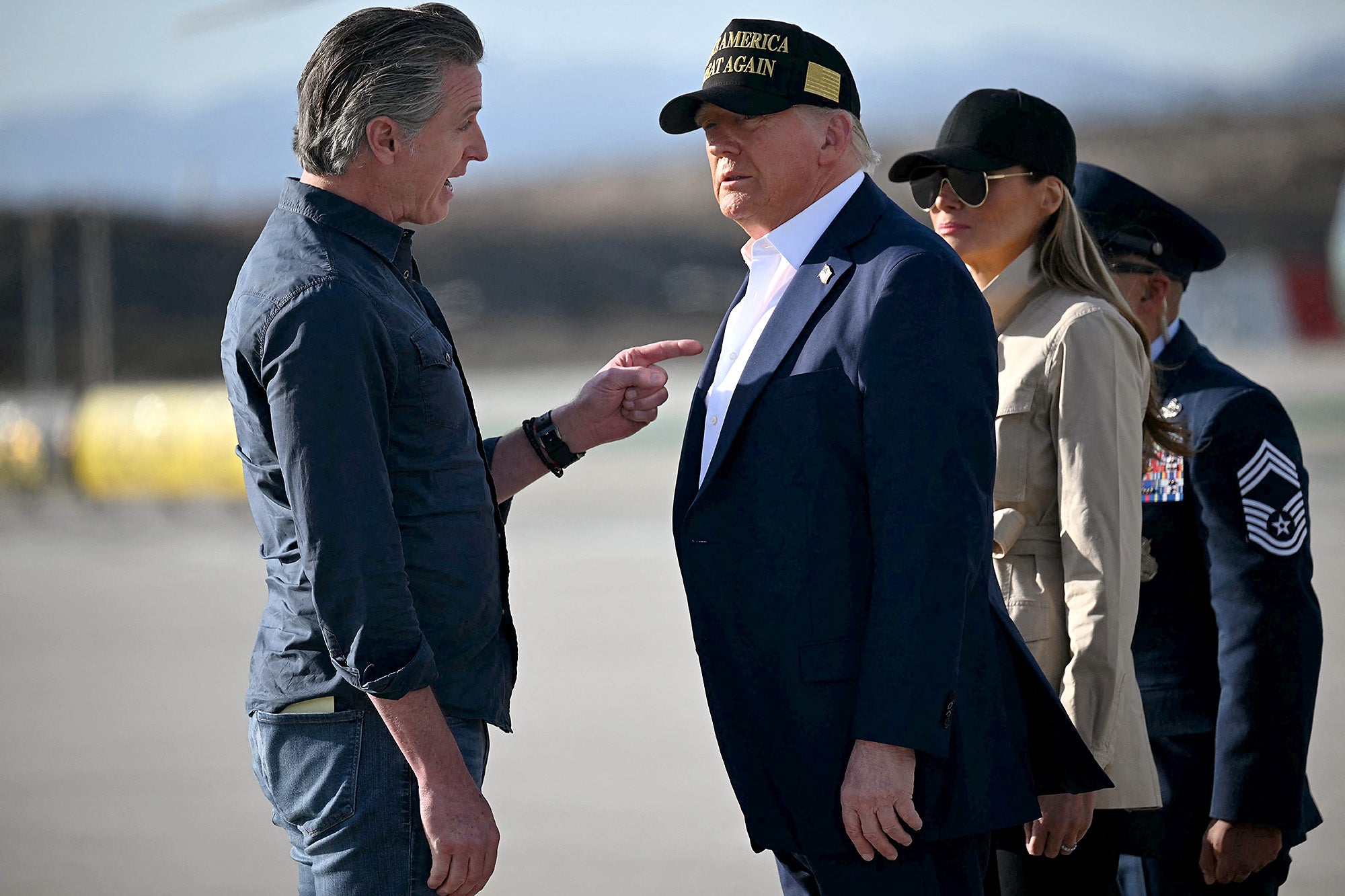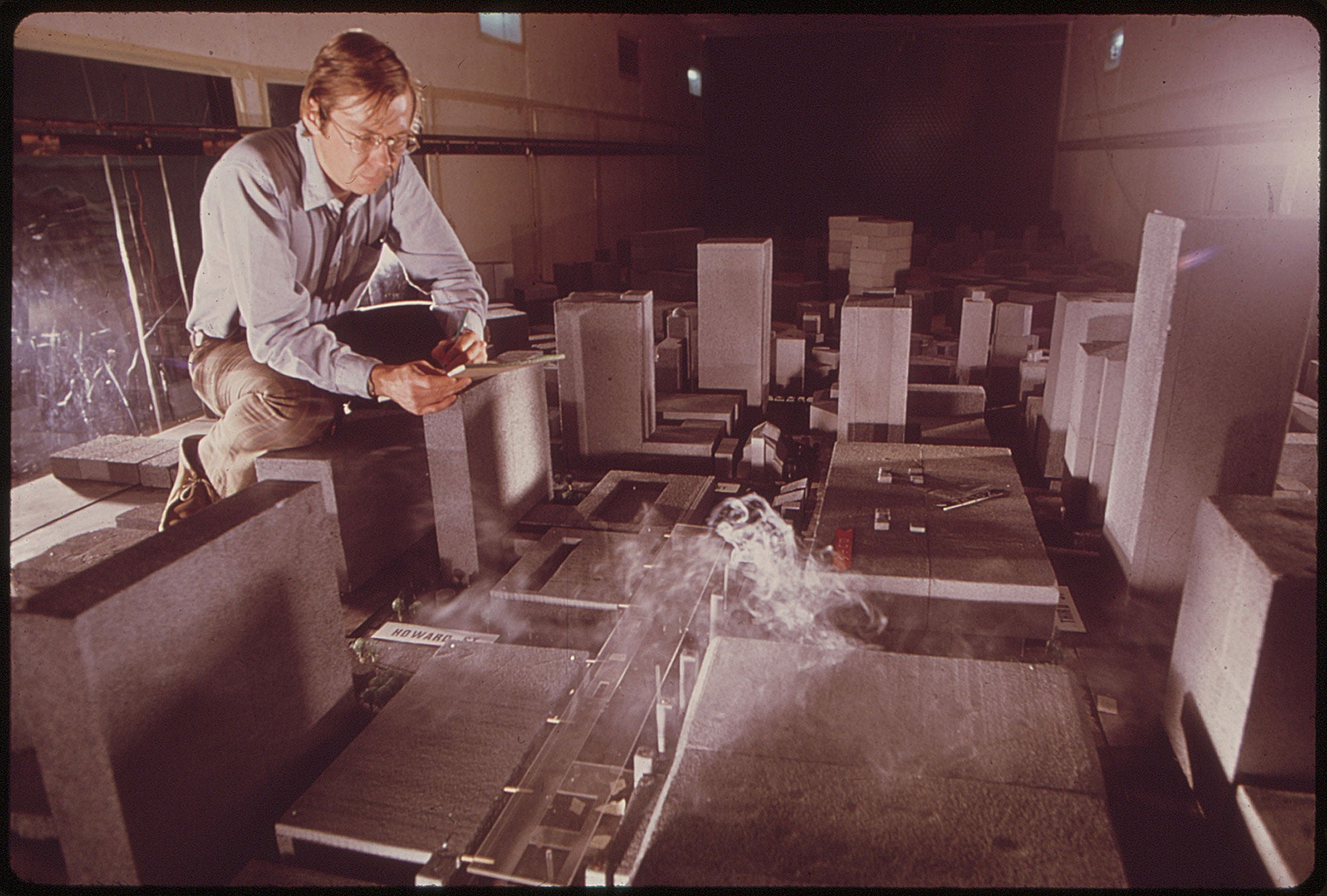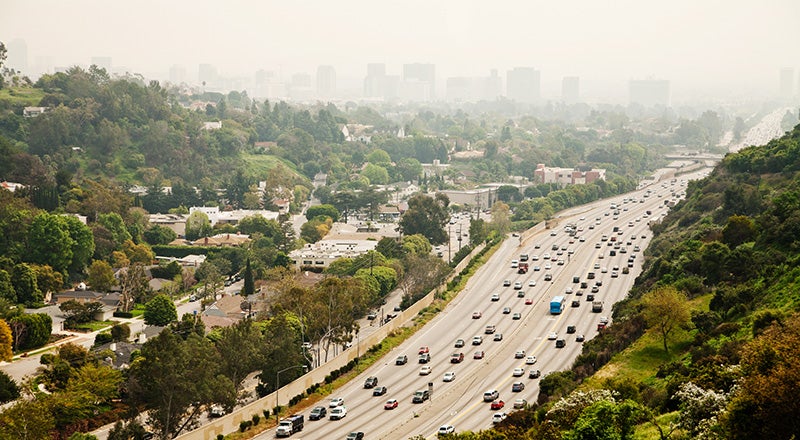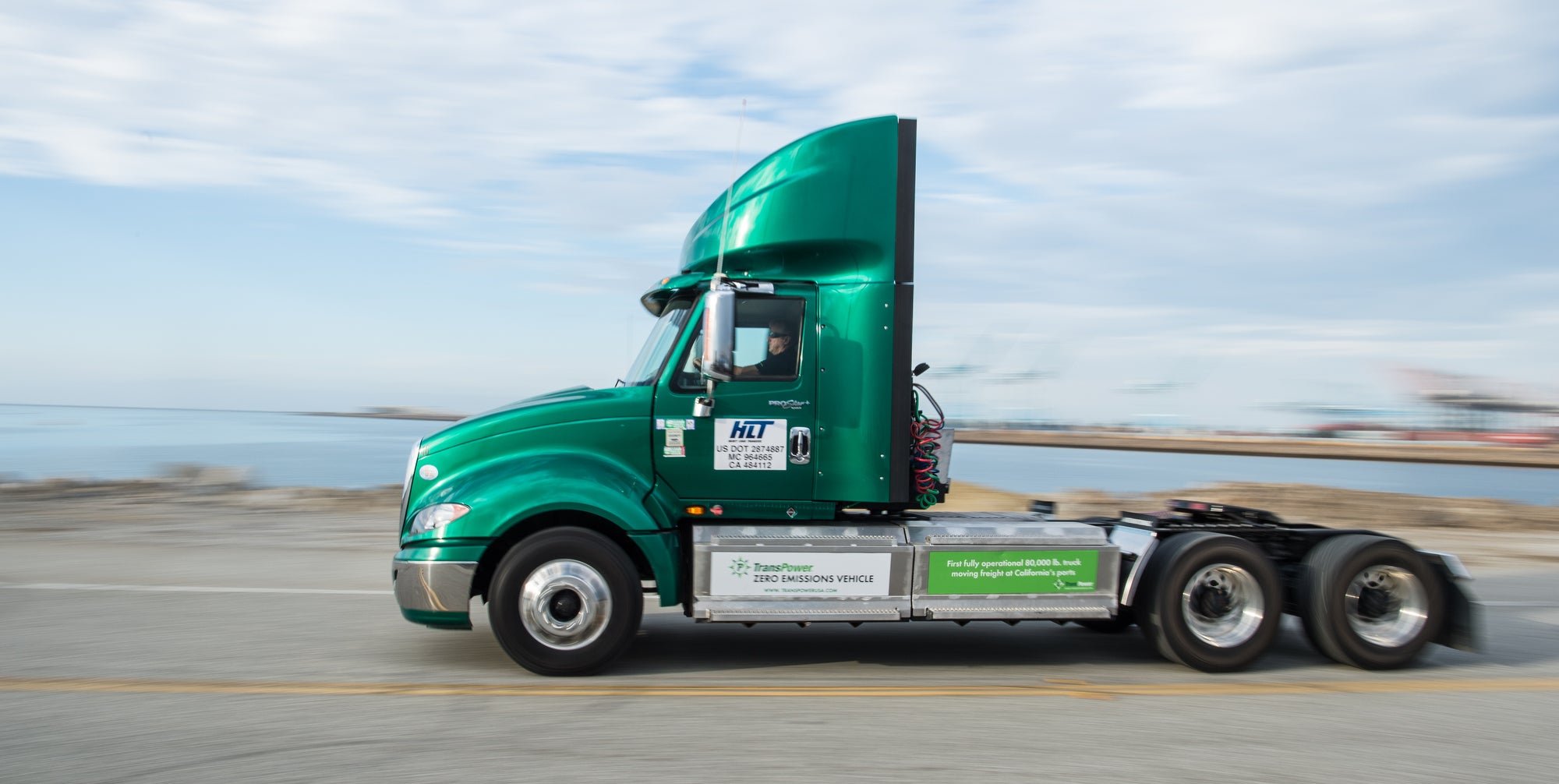California Can’t Afford to Blink in the Showdown over Zero-Emissions
While Trump wreaks havoc, California can resist the big chill on zero-emissions.
It’s 2025 and clean air policy keeps getting dumber and dumber. The Trump administration is doing everything it can to throw a chilling effect on the major leaps we’re making to electrify everything, clawing back incentive funds that would have helped the economy boom. The Department of Energy is photoshopping sparkles on coal with “she is the moment” and bald eagles flying above oil derricks in a fanatical race to the bottom. And, sadly, some California leaders look to be losing their nerve when it comes to California’s ambitious shift to clean energy and clean air. They’re considering rollbacks of California’s lifesaving standards, essentially carrying water for Trump. What is going on?

President Trump and Governor Newsom meet at LAX in the aftermath of the LA wildfires (Mandel Ngan / AFP via Getty Images)
All eyes are on the California Air Resources Board (CARB), an agency that has historically set innovative clean air standards, sparked a sea change in the kind of air Californians breathe, and wielded international influence as the world moves quickly to adopt clean vehicles. But this doesn’t quite feel like the CARB of the last decade, and in some ways the agency needs to rediscover its mettle. Today, CARB made formal recommendations to Governor Newsom for how California can still shift to zero-emissions vehicles and clean its air, but folks familiar with this kind of policy will read it and feel — well, frankly underwhelmed.

Early scientific experiments to understand smog in 1972. (Bill Gillette / NARA)
While CARB made the wise recommendation to pursue a new policy approach with statewide Indirect Source Rules, that should be one part of a bolder plan. The agency needs to remember a critical rule: don’t show your belly to a bully. Here’s what California’s leaders should do.
1. Fear is the mind killer. California should move forward with new rules for zero-emissions cars and trucks and everything that moves so we’re ready for a post-Trump era.
Congress unlawfully repealed the waivers for three California transportation standards this year, but some folks are acting as if it took a wrecking ball to the fundamental structure of the Clean Air Act. That law — and California’s unique legal authority — still stands, regardless of Congress’s abuse of the Congressional Review Act.
The state needs to be ready for the great rebuild that will need to happen in the next federal administration. These rules take years to fully bake before they’re ready for a federal Clean Air Act waiver, so we should start now. And remember, about a dozen states who adopt California’s standards are counting on our leadership.

Smog clogs the air around the 405 freeway in Los Angeles. (Andi Patz / Getty Images)
This month, the critical role of regulations became crystal clear when Daimler, Volvo, and other truck manufacturers sued CARB to kill their agreement voluntarily made with the state to clean up their pollution with the Clean Truck Partnership. It was a visceral reminder that voluntary agreements with industry only go so far — and industry will turn around and bite CARB’s hand with lawsuits to worm out of these agreements.
2. Adopt a “California First” mindset with our climate dollars.
California’s leaders should harness California’s billions in climate funds in the Greenhouse Gas Reduction Fund and the Low Carbon Fuel Standard to fund zero-emissions vehicles that will clean air in the state, deliver economic benefits in the state, and build out modern charging infrastructure in the state. For too long, California has sent the money in these market-based policies to corporate interests outside of California, losing the economic and clean air benefits that should be felt here at home. It’s time for Governor Newsom to step in and do a major course correction for these stale policy approaches.

An electric heavy-duty truck from TransPower used to move freight at the Port of Long Beach. (Dennis Schroeder / NREL)
3. Resist the big chill by creating new pools of incentive funding.
California can and should keep pace with the rest of the world. Newsom likes to talk about our place in the global economy — so let’s use that economic heft to propel us forward with modern infrastructure and zero-emissions technology. For one thing, we can establish new fees on freight cargo carried by polluting vehicles for the largest companies in the world. This will help us create new pools of funding that will help us leap forward, and incentivize California businesses to adopt modern, clean technology.
These are dark times. But remember, California is being targeted because our leadership has made a difference. Roughly a third of the country breathes cleaner air protected by our stronger standards. We’ve made Los Angeles an eminently more breathable city and cut our asthma rates so kids are growing up healthier. We have the strongest clean energy economy around. Let’s hold onto the bold ambition that sparked this journey to a clean future, regardless of obstructionism in D.C.
The California Regional Office fights for the rights of all to a healthy environment regardless of where in the state they live; we fight to protect the magnificent natural spaces and wildlife found in California; and we fight to transition California to a zero-emissions future where cars, trucks, buildings, and power plants run on clean energy, not fossil fuels.
